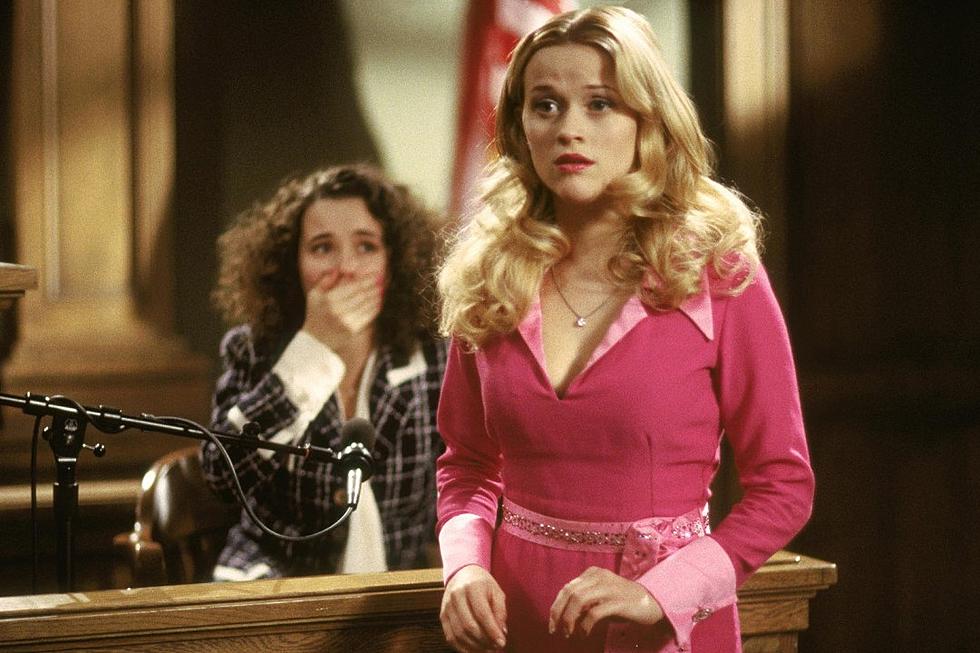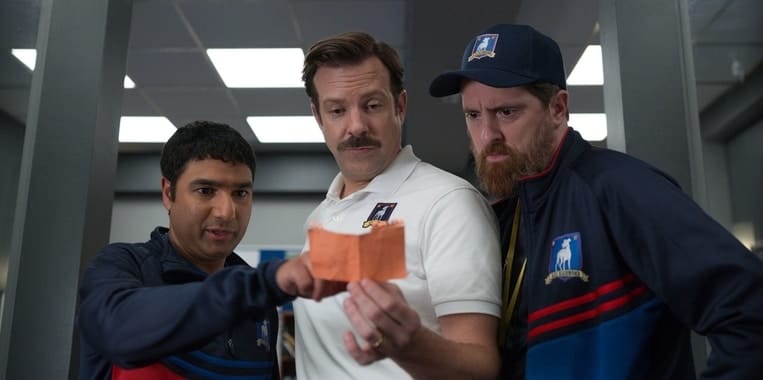Table of Contents
- What is a Fish Out of Water Story?
- The Essential Elements of a Fish Out of Water Story
- 1. Subjective Perspective
- 2. Objective Uses
- 3. Partial Fish Out of Water
- 4. Don’t Be Afraid of Exposition
- 5. Conflict is in the Nature of a Fish Out of Water Story
- The Fish Out of Water Narrative Structure
- 1. The Introduction of a Whole New World
- 2. Making Mistakes
- 3. Success
- 4. The Biggest Challenge Yet
- 5. The Future
- The Fish Out of Water – In Conclusion
- In Summary
What is a Fish Out of Water Story?
A ‘fish out of water’ story is the idiom referring to a character who is removed from their daily lives and forced into a new world and new outlook. In a fish out of water film, for example, a character will be taken out of their ‘normality’ and plunged into a new environment and/or reality, with the conclusion providing the eventual outcome of this juxtaposition.
The character is forced to change and adapt to their new environment. It’s a common way to show character progression.
Fish out of water stories are popular amongst all genres. And in some ways, the fish out of water narrative structure is the basis for most stories in general – a character taken on a journey and forced to learn and adapt to new, changing situations. They feature in both films and TV. And especially for example, in TV show pilots in order to plunge the audience into the story world quickly and assertively.
Because of the versatility of fish out of water stories, it’s difficult to decide how to use the structure most effectively in your screenplays to reap the biggest rewards from this highly entertaining, familiar idiom.
So we’ve compiled a guide on the essential elements of writing a fish out of water story, so that you’re using everything the narrative arc has to offer to its full potential.
The Essential Elements of a Fish Out of Water Story
1. Subjective Perspective
A key element of writing a fish out of water story is choosing which perspective we as the audience are following. This will affect how we should feel about the characters, but also if the narrative affects us as well as them.
The subjective perspective is when we follow the protagonist as they are removed from their day to day and forced into this new world and outlook on life. As they explore and learn, so do we. We never really know any more than the protagonist does.

A fantastic use of the subjective perspective in a fish out of water film is Richard Linklater’s School of Rock. We follow Dewey (Jack Black), an amateur rock enthusiast, who slyly takes his friend’s job as a substitute teacher.
School of Rock works so well as a fish out of water film because there’s many layers and consequences to the plot.
- Dewey has never had a ‘real job’. Therefore he has to navigate what it means to get up every day and actually be responsible for something.
- Having no qualifications in teaching, Dewey has to improvise his way through school life. He has to act like a responsible teacher. This is the exact opposite of where we see him at the beginning – failing at crowd surfing at a rock concert.
Linklater’s film is a concrete example of how to use the subjective perspective effectively in a comedic fish out of water film.
The animated film Ratatouille, meanwhile, also shows how the idiom has no bounds. Pixar crafts a film where the subjective perspective can have us relate and connect to our protagonist no matter who they are – in this case, a rat.
2. Objective Uses
Objective uses of a fish out of water story can make the audience the fish out of water. This works especially well for TV pilots because the audience is forced into a new world filled with new characters. It makes the audience pay particular attention to details in the pilot. They have to get up to speed with where and who everyone is.
Shows like The Office (US), for example, thrust us into this entirely new environment of a working office in the pilot. We are introduced to an array of key characters who already have established relationships and histories. It’s then our job to become engrossed in their lives as the events from there on unfold.
The use of the fish out of water idiom in TV sitcoms is a clever reversal.
- In establishing the tricky dynamic of introducing an audience to a new world that already exists and will continue to exist in a similar way throughout the series, the fish out of water dynamic almost treats us as a character in the series.
- We are the interloper in an existing, spinning world and the pilot’s job is to introduce us to this world.
In a film, the objective use of the fish out of water structure is about setting up the rules of the world in which the protagonist is the fish out of water. Yes, we see the story through the protagonist‘s eyes. But what does the other side of the story look like?
What makes that protagonist a fish out of water? And when the format is such as that of a sitcom, for example, what are the rules that make us a fish out of water here, observing the story from an objective standpoint?
3. Partial Fish Out of Water
Just because it starts as a fish out of water story, doesn’t mean it has to stay that way. Lots of TV shows use the device as a launchpad into the world and characters in the pilot, then abandon it as the story progresses. This is most common in serial TV shows.
The Game of Thrones pilot and first season is a great example of using different types of fish out of water aspects, then abandoning some along the way. The subjective perspective is used as the Starks are forced to become quickly acquainted with King’s Landing – populated with all different types of people they don’t usually interact with.
But we as an audience are entirely new to the world and even the Starks themselves. The show uses the objective perspective to introduce us to all of those aspects also. The objective perspective can seem daunting, especially in a show such as Game of Thrones where the world-building and lore are so expansive. However, a fusion of the two perspectives can ease the audience into slowly learning it all.
The show naturally unfolds and we don’t follow the Starks as exclusively as in that first episode or first series as a whole. It abandons parts of the fish out of water device, expanding the story’s scope as we become more familiar with the world.
4. Don’t Be Afraid of Exposition
Exposition is often seen as a negative. Certainly, heavy-handed exposition is jarring. But it’s also often essential.
Fish out of water stories beg for exposition, especially in those TV pilots and early episodes where it’s essential to grab our attention with important jargon for the audience to understand.
- Fish out of water stories inherently demand exposition as they involve a character learning about something new.
- However, what makes them great and engaging stories is that we can see this exposition through action.
- The writing doesn’t have to explain to the audience what is going on as they’ll learn through the protagonist learning.
This doesn’t mean that there shouldn’t be exposition through dialogue too. Sometimes this is necessary. But the most satisfying and complete form of exposition is often a cohesive balance of visual exposition and exposition through dialogue.
Breaking Bad, for example, doesn’t expect us to know how to cook meth. The show uses the characters and clever writing to convey it in an informative yet entertaining way through exposition. Jessie learns through Walt in a way that feels naturalistic. And once it has been explained in the pilot, it doesn’t really need to be explained again – we see it in action.
Furthermore, Walt also has a lot to learn through Jessie in a fish out of water way – about the drug world. And this dynamic of the two protagonists each learning something new adds to the smoothness of the exposition and the dramatic pull of the narrative overall.

5. Conflict is in the Nature of a Fish Out of Water Story
Because of the nature of fish out of water stories, there is always conflict even when it’s not most obvious. When a fish is out of water, it dies. A fight for survival and a willingness to adapt is essential.
There doesn’t need to be action or overstated conflict for the story to be suspenseful and engaging. So if you’re writing a low budget fish out of water film, this can be a great route to go down.
The very nature of the fish out of water dynamic generates conflict as the protagonist must fight for survival and adapt to a new environment. Either that fish will stay out of the water and die or it will learn to adapt to its new environment. Or it will return to its original environment having survived a challenge and learnt valuable lessons it will never forget.
Whatever the outcome, the very premise of a fish out of water story means that conflict must occur. Otherwise, the character being out of their comfort zone will feel inconsequential.
The Fish Out of Water Narrative Structure
Although it’s so expansive and varied in the genres it can be used in, the fish out of water story will often follow similar story beats in films and TV series.
1. The Introduction of a Whole New World
Act 1 always starts with the character being introduced to their whole new world. Act 1 is vital in making both the character and the new environment as captivating and engaging as possible. It’s what the audience will stick around for.
There also needs to be the twin set up of the protagonist‘s ‘normality’ and the way in which the new world they enter will shift and interrupt that normality. What does the new world show the character about their old world? And why does this mean that they can’t (or will struggle at least to) go back?
In Breaking Bad, for example, Walt’s entrance into the world of meth-making shows that his normality isn’t providing him with what he needs in a way that the new world can.
- His ‘normality’ is living out a safe but dull existence, diagnosed with cancer and unable to afford his medical bills.
- Whereas, the new world he enters provides him with excitement, power and money.
- These things shatter the old world and make it hard for Walt to see a way back to it, no matter how much of those things (excitement, money and power) he attains.
2. Making Mistakes
When a character is so set in their ways, it’s difficult to adjust to this new setting. Everyone is inherently slightly naive, so our protagonist is going to make mistakes and fail to adapt – it’s only natural. These mistakes often set up accomplishments later, and if repeated can be a major source of conflict between characters.
For example, Ted Lasso doesn’t go into his first football game and win, because it would be unnatural. It takes many mistakes along the way to learn how he can use his personality to influence for the best. So the payoff when Richmond FC finally do win is all the more satisfying.
These mistakes allow for more exposition into why the mistakes matter. Mistakes also plant the seeds for a bigger payoff later down the line. Easy success in adaptation isn’t convincing or satisfying as there has been no build-up. So make sure there are believable bumps in the road for your protagonist.
3. Success
Having said that, it obviously can’t all be mistakes and failures for the protagonist. There needs to be some success in this new world. Whether that’s success in their new job or by fitting in with those around them. This is where we often see how bright the future could be for our protagonist. We see the inherent promise in this new reality.
- In School of Rock, for example, Dewey forms a rewarding bond with the students (both rewarding for him and the students).
- After initially being a fish out of water, not caring and then seeking to adapt, both parties have adapted to one another and are thriving.
- Dewey feels on top of the world and sees a road forward.
Success for our protagonist is often in Act 2 or midway through the story, with their biggest challenge yet to come.
4. The Biggest Challenge Yet
To create a rounded and fulfilling character arc, there have to be moments of absolute failure. Perhaps it’s an unwillingness to adapt or a lack of confidence that the protagonist believes they can ever change permanently.
It can also be a monumental challenge ahead that they don’t believe they can overcome. Not every challenge has to be metaphorical.
In Edward Scissorhands, for example, Edward cowers back to his tower as he realises he can never truly fit in with the others. He’s tried to adapt and be a normal person but after being attacked, he can’t see a way forward. The future for Edward looks bleak, with only a few people really caring about him.
This is potentially where the fish feels most out of the water.
- Again, in School of Rock, for example, Dewy is found out to be not who he said he was and is fired from the school.
- He’s back to where he started, a loser with no prospects, barely able to drag himself out of bed in the morning.
Despite all the successes and adaptation achieved, the fundamental reason the character was a fish out of water in the first place comes back to haunt them.
5. The Future
The conclusion to a fish out of water story should round off the arc. Will the main character adapt to this new world? Or return to their old life, but now with a new outlook?
In School of Rock, Dewy has found purpose in teaching kids music and sets up an after school club to teach children music. He’s not the teacher he became for most of the film but has instead found a happy medium.
Whilst in Legally Blonde, Elle conquers the new world of law against all odds and cracks her first legal case. The future appears bright for Elle. She finally gets over her uptight ex-boyfriend and finds love elsewhere via both a new person and a new career.
She has adapted to her new situation and her new situation has also adapted to her. This is often the key to a satisfying and meaningful fish out of water story.
- Not only does the protagonist change in their new world but they also help to themselves change that world.
- This dynamic creates a rewarding and purposeful duality for the story in that both sides of the story that come together (the new protagonist and the new world) need to change and give something to one another.
This is particularly relevant in a fish out of water film as it comes in capsule format. That’s opposed to an ongoing series that will continue to explore the yin and yang of the protagonist adapting to the new world and vice versa.

The Fish Out of Water – In Conclusion
Many stories will incorporate some of these familiar beats. That’s why it’s the writer’s job to be as creative and adaptive as possible to apply these plot devices in new and interesting ways.
The fish out of water narrative structure is an essential storytelling tool and one of the oldest in the book. But using it successfully and applying it to a new melding of worlds and scenarios, can lead to exciting, original films and TV series.
It allows for a story in which the character has to adapt to survive and progress. Whilst it also allows for a context that is rich for exploration, seen through a newcomer’s eyes.
Often the best way to think of the fish out of water story is to think about the audience watching. The audience must feel immersed and invested in the way that the protagonist is a fish out of water. And they must also understand why that character is a fish out of water in the first place. Understanding and feeling these two elements and how they interact is the route to a rewarding fish out of water story.
In Summary
A fish out of water story refers to an idiom in film and TV when a character is plunged into an entirely new world and must adapt to their new, unfamiliar surroundings.
– Subjective Perspective – immerse the audience in the protagonist‘s world and viewpoint.
– Objective Perspective – show the normality of the world around the protagonist or the viewer. Show how the protagonist is out of place from the other side.
– Partial Fish out of Water – use the fish out of water narrative arc when you need to and don’t feel beholden to it, particularly in a TV series.
– Embrace Exposition and Conflict – recognize that exposition is necessary and find a balance between visual exposition and exposition through dialogue. In addition, lean into and exploit the conflict that will come from the protagonist meeting their new world and vice versa.
1. The Introduction to a Whole New World
2. Making Mistakes
3. Success
4. The Biggest Challenge Yet
5. The Future
– What did you think of this article? Share It, Like It, give it a rating, and let us know your thoughts in the comments box further down…
– Struggling with a script or book? Story analysis is what we do, all day, every day… check out our range of script coverage services for writers & filmmakers.
This article was written by Shey Wade and edited by IS Staff.
Get *ALL* our FREE Resources
Tackle the trickiest areas of screenwriting with our exclusive eBooks. Get all our FREE resources when you join 60,000 filmmakers on our mailing list!

